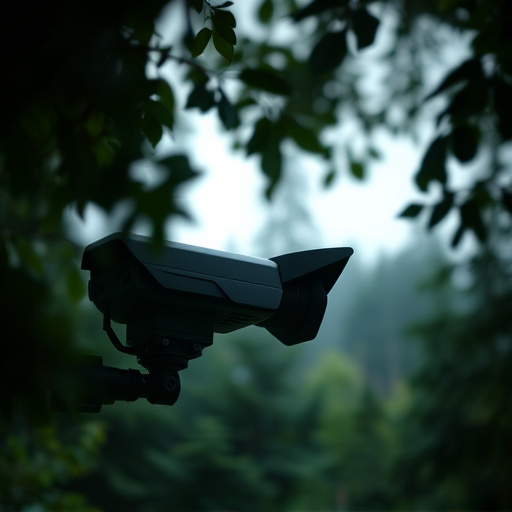Battery-powered wireless spy cameras offer long-range video transmission, compact design, and diverse features like motion detection and night vision. Detecting these cameras requires RF detectors, visual inspection tools, and frequency scanning techniques to uncover hidden lenses and micro-cameras. Safety precautions include well-lit areas, protective gear, and non-invasive detection methods. Professionals recommend specialized equipment and thorough checks for irregular wiring or hiding spots to locate these covert devices effectively.
Uncover the insidious world of hidden surveillance with our comprehensive guide on detecting battery-powered wireless spy cameras. These clandestine devices, often concealed in everyday objects, pose a significant privacy threat. Learn to identify their unique radio frequency (RF) signals and master detection methods using specialized tools. From understanding camera operation to implementing safety precautions, this article equips you to protect your personal space from unwanted eyes.
- Understanding Battery-Powered Wireless Spy Cameras
- Detection Methods: Tools and Techniques
- Identifying RF Signals from Hidden Cameras
- Safety Precautions When Detecting Spy Cameras
- Advanced Tips for Locating Hard-to-Find Devices
Understanding Battery-Powered Wireless Spy Cameras
Battery-powered wireless spy cameras, as the name suggests, operate using a rechargeable battery and transmit video signals wirelessly over a network, usually radio frequency (RF). These compact devices are designed to be hidden in plain sight, making them ideal for surveillance purposes. Unlike traditional wired cameras, they offer greater flexibility in terms of placement and movement since there’s no need for complex wiring.
The RF technology used in these spy cameras allows for long-range transmission of video feeds, often with the help of repeaters or signal amplifiers. This makes it possible to monitor remote locations or areas where direct line-of-sight communication is challenging. Additionally, many battery-powered models come equipped with various features like motion detection, night vision capabilities, and two-way audio, ensuring a comprehensive surveillance solution.
Detection Methods: Tools and Techniques
Detecting hidden cameras, particularly battery-powered wireless spy cameras, requires a blend of technological tools and meticulous techniques. One effective method is to employ RF (radio frequency) detectors designed to pick up signals from remote controls and data transmission. These devices can identify subtle electromagnetic signatures that many hidden cameras emit, making them invaluable for security professionals and privacy advocates alike.
Additionally, visual inspection using specialized equipment like infrared cameras and UV lights can reveal hidden lenses or micro-cameras not visible to the naked eye. Infrared technology is especially useful as many wireless spy cameras lack heat signatures typical of electronic devices. UV light, on the other hand, can highlight reflective surfaces that might indicate the presence of miniature cameras embedded in everyday objects. Combining these methods offers a comprehensive approach to detecting even the most discreetly placed battery-powered wireless spy cameras.
Identifying RF Signals from Hidden Cameras
Identifying RF signals from hidden cameras, particularly battery-powered wireless spy cameras, involves a meticulous approach. These devices often operate on specific frequencies, allowing them to transmit video and audio data wirelessly to a receiver. By using specialized equipment like RF detectors or signal analyzers, individuals can scan for these unique signals in their environment. The process entails tuning into the frequency range commonly associated with wireless spy cameras, which may be in the 2.4 GHz or 5 GHz bands.
Detecting these hidden devices requires patience and a deep understanding of radio frequency technologies. Once an RF signal is detected, further analysis can help confirm its source—a crucial step to ensure that any suspected hidden camera is indeed active and operational. This method has proven valuable in various scenarios, from home security checks to professional surveillance investigations, offering a non-intrusive way to uncover battery-powered wireless spy cameras.
Safety Precautions When Detecting Spy Cameras
When detecting hidden cameras, especially battery-powered wireless spy cameras, it’s crucial to prioritize safety. Always conduct searches in well-lit areas and avoid entering confined or dimly lit spaces where a camera might be concealed. Wear protective gear such as gloves and eye coverage to minimize potential risks from unknown objects or substances. Additionally, ensure you have a trusted companion or team member present for support and to maintain a clear view of your surroundings.
Use non-invasive detection methods whenever possible to prevent accidental damage or triggering any security mechanisms. Avoid touching surfaces that could be camera components or connected devices. Keep a distance from walls, ceilings, and floors as hidden cameras often exploit these spaces. Stay vigilant and trust your instincts; if something feels amiss, it might be a good idea to investigate further using specialized equipment designed for detecting radio frequency signals associated with spy cameras.
Advanced Tips for Locating Hard-to-Find Devices
When dealing with hidden cameras, especially those that are battery-powered wireless spy cameras, locating them can be a challenging task. These devices are designed to be discreet and often operate on frequencies that are not easily detectable by conventional methods. To overcome this, professionals recommend using specialized equipment like RF (radio frequency) detectors and signal analyzers. By scanning through various frequency bands, these tools can pick up on the unique signals emitted by hidden cameras, revealing their location.
For hard-to-find devices, it’s crucial to consider the environment and potential hiding spots. Battery-powered wireless spy cameras might be placed in areas with low human traffic or hidden behind objects that offer cover. Checking for small gaps, crevices, or unusual attachments can provide leads. Additionally, keeping an eye out for telltale signs like irregular wiring or slightly elevated surfaces can help in identifying these covert devices.
Detecting hidden cameras, particularly battery-powered wireless spy cameras, is a crucial skill in today’s digital era. By understanding their operation, employing detection methods like RF signal identification, and adhering to safety precautions, you can navigate this modern-day enigma. With advanced tips for locating hard-to-find devices, you’re empowered to protect your privacy and peace of mind. Remember that staying informed and proactive is key in preserving a safe and secure environment.
